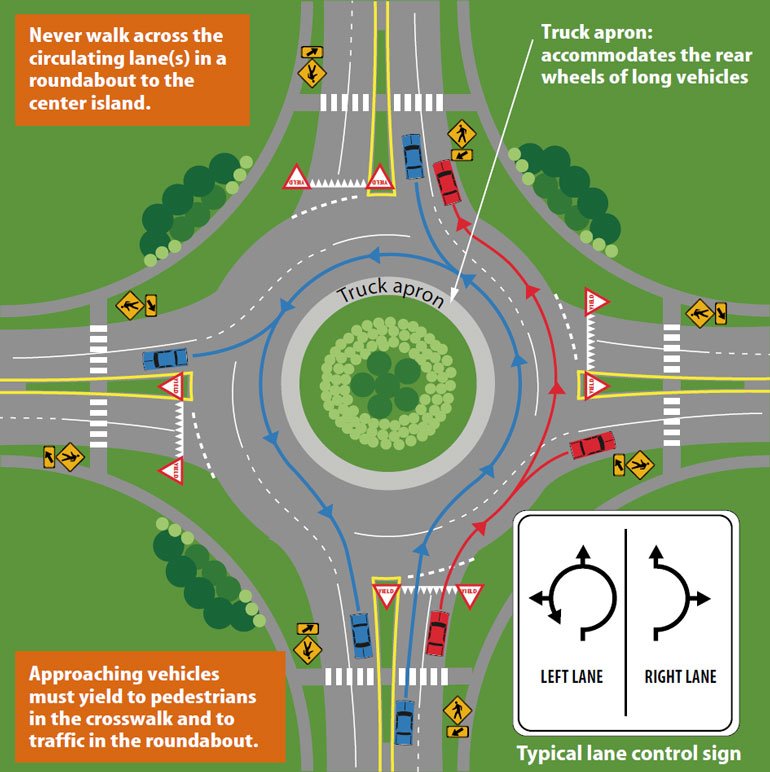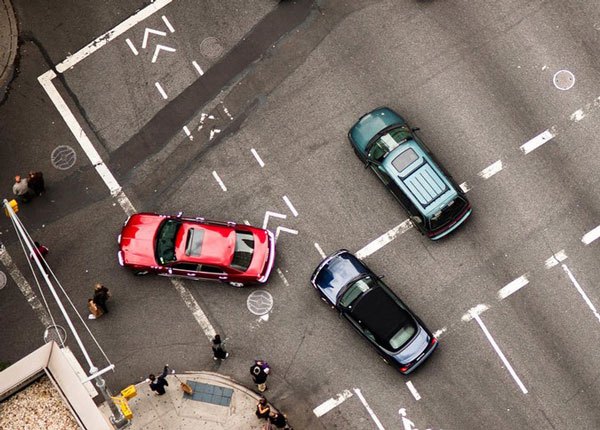
Choosing The Right Lane for Any Situation: Acing Your Driving Maneuvers
Updated Oct. 30, 2020Learning how to use lanes appropriately is essential for any driver who will be using large roads and freeways where there are multiple lanes of traffic moving in the same direction. It is likely you will one day need this information, even if you live and work in a rural area where the roads generally have a single lane traveling each way. When you eventually encounter a larger road, you must be able to choose the right lane without hesitation. Incorrect lane usage can endanger all road users, hold up traffic and incur a traffic fine.
Fortunately, identifying the correct lane to drive in is not difficult. Follow the guidelines laid out below and you should never go wrong.
Keep to the right
Lanes of traffic on a highway are organized by the speed at which the vehicles occupying that lane travel. In most cases, the slowest traffic should keep to the right, faster traffic should occupy the center lanes and those traveling at the highest speeds should stick to the left lane. “Keep to the right” is the first rule you should abide by when choosing a lane on the highway.
In many states, the left lane is reserved only for motorists who are in the process of overtaking another vehicle or making a left turn. Check your state’s own driving manual to find out what the rules are in your area. As it is commonly known, the “keep right” law prohibits motorists from occupying the left lane unless it is for either of the above reasons. Even if no such law exists in your state, it is good practice not to remain too long in the left lane.
Driving in the left lane
Whether it is a legal requirement in your state or not, we recommend only choosing the left lane on a highway when you need to pass other traffic or execute a left turn. Use your mirrors to check for drivers already occupying the left lane before you change lanes; remember that these vehicles will be traveling faster than you. If overtaking, merge back to the right lane when the maneuver is complete. It is against the law to surpass the legal speed limit, even in the left-hand lane.
Avoid driving in blind spots
The speed at which you are traveling is not the only factor you must consider when choosing a lane on the highway. Avoid driving in another vehicle’s blind spot, as you may not be clearly visible to the driver. This is particularly important where trucks and larger vehicles are concerned. The larger the vehicle, the larger the blind spot.
Always check that your intended lane-change is not about to land you in another driver’s blind spot before completing the maneuver. Change lanes or increase your following distance as necessary, should you find yourself in this position.
Preparing to exit the highway
Drivers should prepare to leave the highway as early as possible. Never make last-minute highway exits by changing lanes in a hurry as you could startle other drivers or lose control of your vehicle. It is always better to miss your exit than to be involved in a collision.
Preparing to leave the highway in good time is easy, thanks to the green guide signs that warn you of your approaching exit at least a couple of miles in advance. Merge to the furthest right lane when you see these signs. Sometimes you will encounter dedicated “EXIT ONLY” lanes on the right. Only occupy this lane if you intend to leave the highway at the next exit.
Lane use control signs
Active lane use control signs are often placed above lanes on tunnels, bridges, toll booths and multi-lane roads. These signs are usually present where the direction of traffic is subject to change, or the lanes are opened and closed at different times throughout the day. The main signs you will encounter in this situation are detailed below:
- A steady green arrow: You may drive in this lane.
- A steady red “X”: Do not use this lane.
- A steady yellow “X”: Merge out of this lane, the direction of travel may be about to change.
- A flashing yellow “X” or a steady white arrow pointing left: Only use this lane to turn left.
Merging traffic ahead
A “MERGING TRAFFIC” sign indicates that other drivers will be entering the highway ahead. When this sign is present you should choose one of the middle lanes, to make way for these motorists. Only remain in the right-hand lane if you are preparing to exit the highway or if the adjacent lane is too busy.
 Merge signs are placed near freeway entrances to alert you to traffic entering the freeway. Always watch for vehicles merging onto the freeway. Adjusting your speed or moving safely into another lane will allow drivers to enter the freeway smoothly and safely.
Merge signs are placed near freeway entrances to alert you to traffic entering the freeway. Always watch for vehicles merging onto the freeway. Adjusting your speed or moving safely into another lane will allow drivers to enter the freeway smoothly and safely.Choosing a lane at a roundabout
Choosing a lane is not a problem at single lane roundabouts. When the roundabout has multiple lanes, you must know which one to choose for your intended exit. These general rules of thumb apply:
- 1

Enter the right-hand lane if you plan to turn right or travel straight through the roundabout (note: you may use either lane to travel straight through).
- 2

Enter the left-hand lane if you wish to turn left or return in the direction from which you came.





